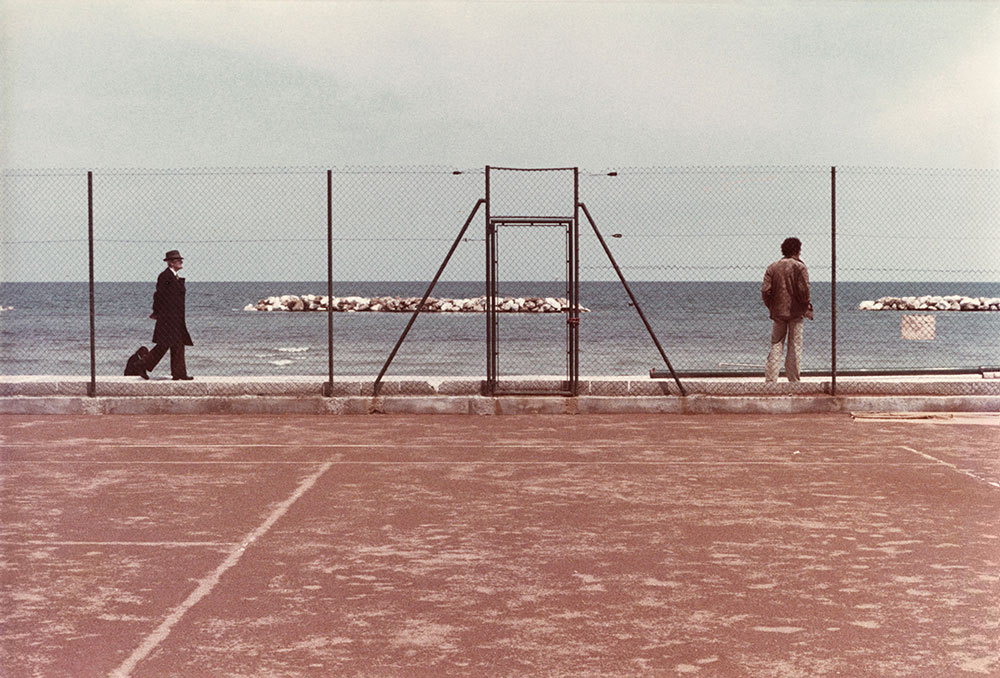Luigi Ghirri - Cartes et Territoires | Jeu de Paume
This intoxicating exhibition gives us a panoramic view of a photographer who specialised in narrow, close-cropped scenes.
Luigi Ghirri’s photographs showcase his background as a surveyor, his daily dealings with charts and maps. The exhibition concentrates on his work during the 70s, a time of comparative peace and stability in Italy, his native land, following lean postwar years. Gardens and houses are neat, the roads are smooth, the skies are (usually) blue. The composition of the photographs is all about structure, with horizons, walls and overhead wires framing his scenes. They generally don’t feature people - or if they do, these people aren’t looking at or talking to each other. And they usually focus on comfortable suburbs and the accoutrements of placidly consumerist middle class life.

Order and logic is important. The photos are all named in the same format: where they were taken, and when. It’s clearly a personality trait - other works at the Jeu de Paume show reveal that Ghirri kept his bookshelves in strict alphabetical order.
In his writings, Ghirri underlined the importance of portraying what’s already there, without ideology or trickery. “My aim is not to make photographs but rather charts and maps that might at the same time constitute photographs,” he said.
But, for whatever reason, his scenes are utterly distinctive, and pack great emotive power.
I loved Pescara 1972, pictured above. The finicky structuring is all there, in the lines of the clay tennis court, wire fence, horizon and concrete, sea-side esplanade. But there’s something in that scuffed clay, murky sea, and especially in the trench coat-clad gentleman to the left, wheeling his suitcase towards a more casually-dressed man, who turns away. It’s a peaceful scene from a comfortable time, but the viewer can’t help but create a backstory. There’s some alchemy going on here, where the stillness of the scene, and the precision of its framing and shooting, is in itself suggestive.
Look again at that horizon. It doesn’t just help structure the photo, it separates measurable from unmeasurable space.
Ghirri found international fame quickly. Having stopped working as a surveyor in 1973, the Bibliotheque Nationale Française had some of his photos in its collection by 1977, and the structure of the Jeu de Paume show is based on a retrospective held in Italy in 1979. Ghirri worked consistently around the world until his death in 1992, but his works from the first decade still define him as an artist.

Here’s a typical example: Modena 1973, shot in Ghirri’s hometown. Again, we have careful cropping, and intersecting lines, from the shadow of the building in the foreground, to the curb, to the perfectly perpendicular advertising sign - elf. But isn’t there something ineffably strange about those just-so triangular stacks of Elf petrol tins? Don’t they seem like they could be blown over, on a less sunny, still day than Ghirri chose to portray?
I first encountered Ghirri in a great show at M&L Fine Arts in London, a couple of years ago. And coming across him again was like re-encountering an old friend. A well-off, quiet, calm friend with a tantalizing secret. One he’ll never share.
Luigi Ghirri: Cartes et Territoires is at Jeu de Paume (Paris). 12 February – 2 June 2019